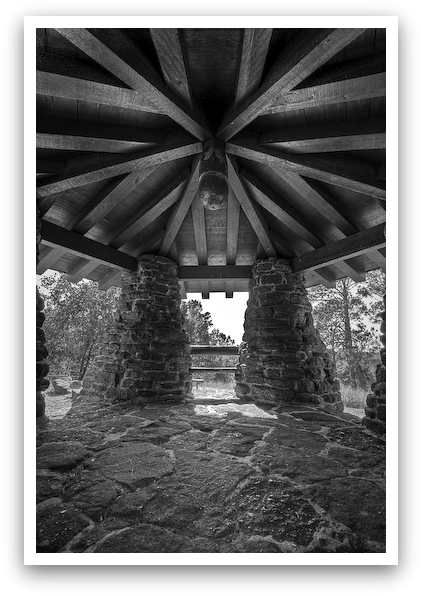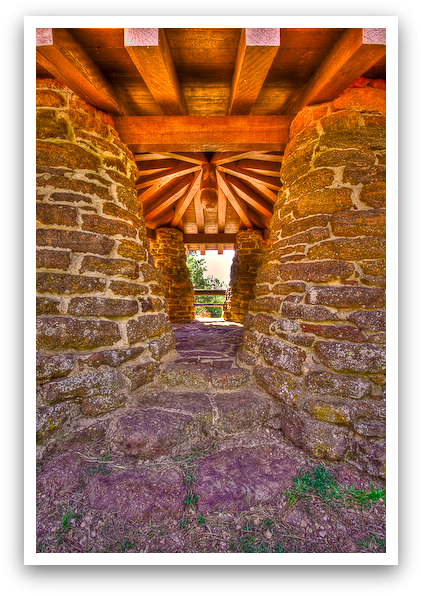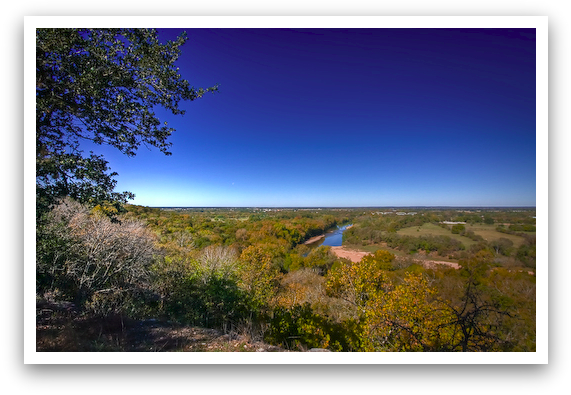I seem to on a roll this week so I’ll stick my neck out again with another over the top proclamation; You don’t need no stinking HDR to obtain a well-balanced exposure! Boom! There it is. Let the flames begin. 😉
Wow, that was fun. Honestly though, you really can get a well balanced exposure even in bright sunlight. I took this shot last June during an early evening hike in Palo Duro Canyon State Park in the Texas panhandle. I was hiking to find some interesting subjects to shoot later in the evening when I came upon this grouping of rocks framing the canyon rim in the background.
I was facing almost due west and the sun was casting very harsh shadows onto the red dirt. This type of scene is well beyond the dynamic range of any DSLR sensor with the bright sky almost eight stops brighter than the shadows under the rocks. I knew if I had any chance of getting a decent exposure I would have to fool my camera’s light meter and even out the exposure in the scene. Where an HDR expert would take several shots at various exposures and blend them together in Photomatix, I wanted to see if it was possible to do the same “in camera”.
Hiking in Palo Duro Canyon – Canyon, Texas
Copyright © 2010 Jeff Lynch Photography
Shot taken with a Canon EOS 5D Mark II set on aperture (Av) priority using an EF 17-40mm f/4L USM lens tripod mounted. The exposure was taken at 31mm, f/16 for 1/20th of a second at ISO 100 with a Singh-Ray warming polarizer filter and 2-stop graduated neutral density filter. Post capture processing was done in Adobe’s Lightroom 3.
Click on the image above for a larger version.
View Location on Panoramio & Google Earth: Hiking in Palo Duro Canyon – Canyon, Texas
Incident or Spot Metering
My first step was to grab my Sekonic L-358 and meter the background, the rocks and the shadows to see just how far apart they were in exposure. Your Canon DSLR’s meter can also do this when used in “Partial” or “Spot” metering modes. If you try this in “Evaluative” mode your camera’s meter will most likely blow out the background completely.
Aperture Priority
I set my tripod mounted camera on Aperture (Av) priority at f/16 and took a quick shot using Spot Metering mode with no exposure compensation and no filters. I chose a single focus point in the shadow of the large rock to see how much detail I could capture. As I thought, the shadow detail was fine but the blue sky and white clouds were completely blown out.
Manual
Next I set my camera on Manual (M) with f/16 at 1/10th of a second shutter speed, again with no filters. Now, the blue sky came back a bit but the white clouds were still blown out and the shadows had darkened only a little. Now, we’re cooking!
Filters to the Rescue?
At this point I had pretty decent exposure of the rocks and shadows but the sky was still too bright. So I added a Singh-Ray circular polarizer to my lens and dialed in about half power by rotating the filter slowly until the clouds showed some detail. I also added a 2-stop, soft edge, graduated neutral density filter angled to match the slope of the canyon rim.
I adjusted both filters and my shutter speed until the blue sky darkened and the white clouds barely showed any detail. This resulted in an exposure of 1/20th at f/16 which evened out the light and dark areas in the shot with one exception. Anyone care to guess?
You’ve got it. The top of the large rock was bisected by the graduated ND filter and became much too dark for the image to look realistic. As one of my readers (and a friend I hope) from the Pacific Northwest points out, this is where graduated ND filters fall down on the job.
Finishing Your Image in “Post”
Luckily, this is where a program like Adobe Photoshop or Lightroom really shines. As you can see in the screenshot below, I used Lightroom 3’s “Adjustment Brush” to paint the top half of the large rock to increase the exposure, brightness and contrast until it matched the lower half.

Conclusions
Did I cheat to get this shot? That’s up to you to decide. I’m pleased with the results and very pleased that I could do it with 95% “in-camera” techniques and only 5% “post processing” techniques and I did it without resorting to HDR.
Does that mean that I’ll never use HDR techniques in my work? Not at all. Many of my best interior shots were created by blending several exposures together using Photomatix Pro. I may advocate creating images “in camera” but I’m also very pragmatic. I look at software (Lightroom, Photoshop, Photomotix) in the same manner that I look at hardware (camera, lenses, strobes). They are just tools, no different than a typewriter or a monkey wrench. Whatever it takes to get the job done!







 I think I’m on a roll here so I’m gonna keep going.
I think I’m on a roll here so I’m gonna keep going.


